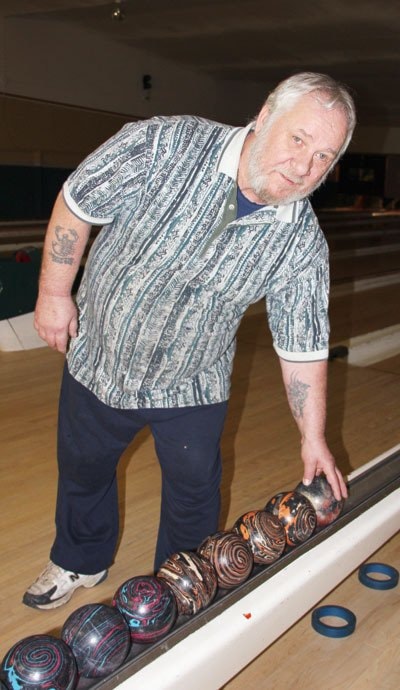Bowling has a long history that goes back to early Roman days, and its origins in the South Cariboo also reach to the past.
Modern bowling can be linked to an old German religious ceremony during which parishioners could have their sins forgiven by rolling a rock and striking down a wooden pin.
The game took on a more dubious air in the mid-1800s when it was called "nine pin" and the lanes served as gambling centres.
This led to the game becoming outlawed, but it was revived with the addition of a 10th pin and the new name of "bowling."
Since gaining a new identity, it has become a social game enjoyed by all.
In 100 Mile House, bowling made its debut in 1971 when residents Tom and Maxine Hunt established an eight-lane, 5-pin alley on Scott Road at 99 Mile.
The Quonset hut-style building and the bowling lanes came from different locations in the United States and were already used when purchased. Originally, the bowling alley had 12 lanes and was set up for 10-pin, but when erected in its new home, it was converted to eight lanes and 5-pin mode.
The bowling alley promptly became a community meeting place, supporting around 20 bowling leagues, which kept the facility busy seven nights a week, and a junior and women's league in the daytime.
Marlene Palasty and her husband, Don, were among the first league bowlers to sign up and Marlene recalls the instant buzz created by the opening of the new bowling alley.
"Right from the beginning it was something that excited people. There wasn't a lot going on in winter in 100 Mile and we didn't have the big arena for hockey at that time."
It was a social centre where many children had their birthday parties and where people built skills and reputations as bowling gurus, she adds.
"Jack Symons nearly lived at the alley and he was probably one of the best. Wally and Polly Deptuck were steady bowlers and so was Marilyn Niemiec, a former X-ray technician at the hospital.
"We all just had great fun together. They were a great bunch of people."
The alley saw many good years, with several of its league bowlers, including Penny Bjornson, qualifying to compete at nationals at different times. The provincial team each year was comprised of the top six bowlers in the province and members regularly came from 100 Mile House.
"The reason we were so good was because our lanes were always breaking down and pins were left standing when they shouldn't have. We learned how to curve a ball because we had lots of practice at picking the corners."
Bjornson and a handful of her fellow bowlers earned their designation as master bowlers and shared their expertise as teachers for the youth bowling league. Bjornson says they would travel to compete all over the province and the local club turned out a lot of talented young bowlers.
Gradually, inattention to the upkeep of the local alley and its equipment, and the introduction of new activities in the community, led to the decline in popularity for bowling.
The many leagues that once kept the business hopping, shrank or folded, causing the alley to gradually lose its reputation as a community hub.
Current owner Rick Green first had his eye on the business in 1994, but as a busy realtor back then, there weren't enough hours in the day to share between the two interests.
In 2011, following career and life changes, Green got his opportunity to purchase The Bowling Alley and has been remolding its image ever since.
Once the home to a busy arcade section, that area of the building has been closed. With personal gaming devices so popular and accessible to the public now, Green says it has caused the bulky electronic game machines to lose their lustre.
Now, instead of attempting to stay ahead of technology, Green is going back to basics and trying to turn people back on to bowling and board games. He has collected about 80 popular games, which are available for patrons to play after a session of bowling, or while coming to socialize.
"I want to see this place as a community centre focused on face-to-face interaction rather than face-to-TV interaction."
An upstairs lounge once saw a lot of action, and still serves as a venue for parties. While Green is working on bringing the decor up-to-date, the building is still something of a time capsule, with mementos of the past tucked into every nook and cranny and a mountain of old trophies, stored on shelves.
Most names on them are familiar ones, with Ohlund, McKenna, Hannah, Bjornson, Peeters, Barnett, Lane, Adrian, Grover and Driediger among them.
While the lanes no longer see the action they once did, they get a fair amount of use from community groups, schools, a seniors' league and visiting sports teams. Green says he would like to see the return of men's, ladies', mixed and youth leagues.
"At one time, the alley was a thriving part of the community. I'd like to see it come back to that."
